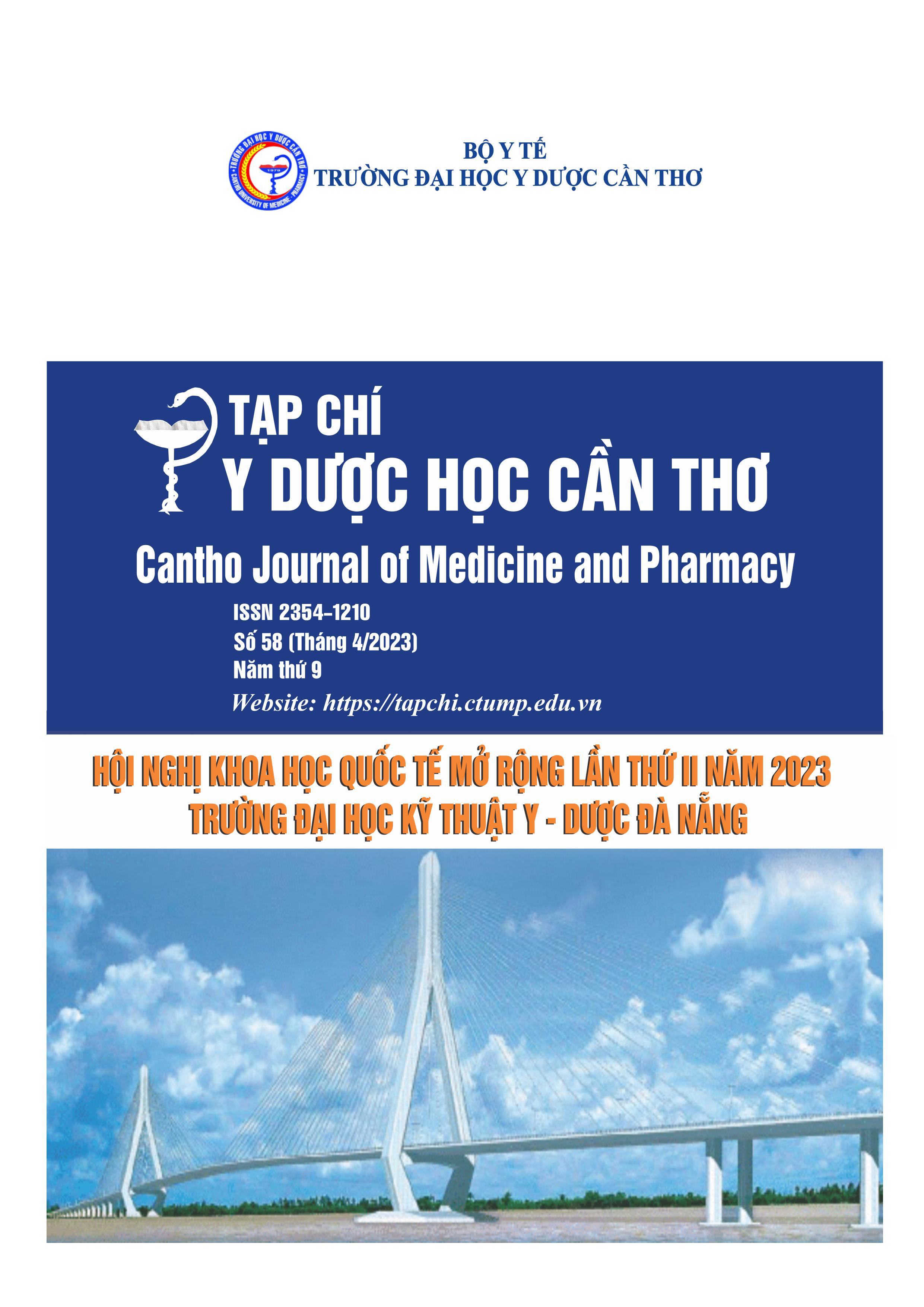HISTOLOGICAL FEATURES OF TRIPLE IMMUNOHISTOCHEMICAL NEGATIVE BREAST CANCER AT DA NANG ONCOLOGY HOSPITAL
Main Article Content
Abstract
Background: Breast cancer is the most common cancer in women and is the leading cause of cancer death. According to the Globocan 2020 data, it is estimated that nearly 2.26 million new diagnoses, accounting for 11.7% of the total number of cancers. Objectives: To comment on the histological features of triple negative breast cancer by classification of the World Health Organization 2012. Materials and methods: We performed a cross-sectional descriptive study of 127 specimens on female breast carcinoma patients treated with mastectomy and negative triplet immunohistochemistry at Danang Oncology Hospital. Results: The mean age is 54.29±14.32 years old. The most common age group is 50-59, accounting for 26.8%. There are 6 histological types: Invasive carcinoma of no special type, metaplastic carcinoma, carcinoma with medullary features, invasive lobular carcinoma, mucinous carcinoma, and micropapillary carcinoma. In which, Invasive carcinoma of no special type is the histological type with the highest rate (90.6%), the three histological types with the lowest rate are micropapillary carcinoma, mucinous carcinoma and invasive lobular carcinoma (0.8%). Histological grade III accounted for the highest percentage (63.8%), none of which had histology grade I. There were 33% of cases with lymph node metastasis in which most of them were 1-3 lymph node metastasis (22.8%). High Ki67 index accounted for 91.3%; low Ki67 index accounted for 8.7%. Conclusion: The most common age group for triple negative breast cancer is 50-59. Invasive carcinoma of no special type is the histological type with the highest rate. Histological grade III is the most common. Most cases of triple negative breast cancer do not have lymph node metastasis. The high Ki67 index accounted for the highest percentage.
Article Details
Keywords
Triple negative breast cancer, histological type, histological grade
References
2. Nguyễn Thị Duyên (2016), Nghiên cứu một số đặc điểm lâm sàng, mô bệnh học, và hóa mô miễn dịch của ung thư biểu mô vú bộ ba âm tính, Đại học Y Hà Nội.
3. Phùng Thị Huyền, Trần Văn Thuấn (2016), “Đặc điểm lâm sàng, mô bệnh học bệnh nhân ung thư vú có bộ ba thụ thể âm tính ER (-), PR (-), HER 2 (-) giai đoạn 2005-2007 tại Bệnh viện K”, Tạp chí Y học Việt Nam tháng 1, tr.15-18.
4. Cernea. Ana, Juan Luis Fernández-Martínez, Enrique J deAndrés-Galiana, et al. (2016), “Analysis of clinical prognostic variables for triple negative breast cancer histological grading and lymph node metastasis”, Journal of medical informatics and decision making, 1(1), pp.14-36.
5. Chacón.R. D và Costanzo M.V (2020), “Triple-negative breast cancer”, Breast Cancer Res, 12
(2), 3.
6. Dent.R, Trudeau.M, K. I. Pritchard, et al. (2007), “Triple-negative breast cancer: clinical features and patterns of recurrence”, Clin Cancer Res, 13(15), pp. 4429-34.
7. GLOBOCAN (2020), https://gco.iarc.fr/.
8. Pruneri. G, Gray. K. P, Vingiani. A, et al. (2016), “Tumor-infiltrating lymphocytes (TILs) are a powerful prognostic marker in patients with triple-negative breast cancer enrolled in the IBCSG phase III randomized clinical trial 22-00”, Breast Cancer Res Treat, 158(2), pp.323-31.
9. Wang. C, Kar. S, Lai. X, et al. (2018), “Triple negative breast cancer in Asia: An insider's view”, Cancer Treat Rev, 62, pp.29-38.
10. Zhao. S, Ma. D, Xiao. Y, et al. (2018), “Clinicopathologic features and prognoses of different histologic types of triple-negative breast cancer: A large population-based analysis”, Eur J Surg Oncol, 44(4), pp. 420-428.


